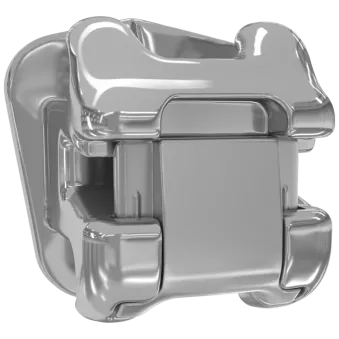
How Long Will My Orthodontic Treatment Take with Braces or Clear Aligners?
by Dr. Tom Barron
There’s never been a better time to be an orthodontic patient! Contemporary treatment options, driven by advancements in technology, allow our patients to achieve attractive, and healthy smiles with convenient, minimally invasive and faster treatments compared to just a decade ago.
The Length of treatment time will vary and depends on several factors.
Among the most common questions that prospective patients and parents have regarding orthodontic treatment, aside from cost, are:
- What are the treatment options available for my particular case?
- How long will it take?
The short answer to each is: It depends.
It depends on the clinical judgement of the orthodontist based on the age of the patient, the complexity of their orthodontic problem, their preferences, and their level of cooperation with the recommended treatment.
I will address the questions above with these variables in mind.
Pre-Adolescent Patients:
Let’s begin with potential treatment options for pre-adolescent patients, 7 to 11 years of age, requiring treatment before all of their adult teeth have come in. In general, treatments at this stage are for the creation of space to accommodate the adult teeth via lengthening and widening of the dental arches. Other interceptive treatments at this stage include bite issues where the teeth do not meet properly and do not allow the patient to bite properly, as well as certain jaw and facial growth issues. In general, these interceptive, or phase I treatments occur when baby teeth are loose and falling out and adult teeth are growing in. These cases are better suited for braces and adjunctive widening and bite correcting appliances. Typical treatment times range from 6 to 12 months requiring appointments every 6 to 8 weeks. This can vary due to the complexity of the case and the patient’s level of cooperation.
Adolescent and Adult Patients:
For adolescent patients between the ages of 12-18, who have lost all or most of their primary, or baby teeth, and for adults, treatment with either braces or clear aligners is possible. Though the range of cases that can be treated successfully with clear aligners is expanding with advances in aligner technology, in general, the more complex cases with severe crowding and significant bite issues, are usually better suited for treatment with braces.
Adolescents and Adults with Mild Problems:
These types of cases include relatively mild crowding or mild spacing. A majority of these cases can be treated successfully with either braces or clear aligners. Treatment with braces, especially the modern, low force, self-ligating bracket and high-tech alloy wire systems, provide excellent and predictable results with greater comfort, than ever before. These braces are small and discreet and are available in tooth-colored material for those patients who prefer an even less noticeable look. Very mild crowding or spacing without bite problems may require 6 to 9 months of treatment seeing the patient every 4 to 6 weeks.
The decision to treat with clear aligners instead of braces hinges on the expected level of cooperation wearing the removable trays. Patients must be willing and able to wear the aligners for a minimum of 22 hours per day for the treatment to be effective. Each set of aligners are worn for 7 to 10 days, depending on the orthodontist’s recommendations, before progressing to the next set. The correction of very mild crowding or spacing may require approximately 20 aligner sets or less. With a compliant patient, this can be accomplished within 6 months seeing the patient approximately every 8 weeks to check the progress. However, sometimes correction is not completely achieved during the course of treatment requiring additional aligners which will extend the treatment time.
Adolescents and Adults with Moderate Problems:
The degree of crowding or spacing is greater in these cases than in the mild ones, and bite issues are present where the upper and lower teeth do not meet properly, such as deep overbites, or open bites, or protruding teeth. Many of these cases can be treated successfully with either braces or clear aligners. Treatment with braces in these moderate cases can take 14 – 18 months, seeing the patients every 6 weeks on average. Some stages of treatment may require more frequent visits and other stages may require less frequent visits. The patient typically wears elastics to help correct the bite problems. New self-ligating bracket and wire technologies are undergoing clinical trial to demonstrate that treatment times can be reduced to 12 months or less for a majority of these moderate cases in the near future.*
Though clear aligners can successfully treat patients with orthodontic problems in the moderate spectrum, as the complexity of the case increases, your orthodontist may decide that braces will be a more effective option for the best result. Patients undergoing treatment with aligners in this moderate category can expect additional refinement aligners to properly finish their alignment and bite to the high standard of care that orthodontic specialists strive for. Considering the need for refinement aligners, the length of treatment may be comparable to that of braces. As with any type of orthodontic appliance, treatment times will be extended if patient cooperation is not adequate.
Adolescents and Adults with Severe Problems:
The degree of crowding is severe in these cases, and they are typically accompanied by significant bite issues and jaw alignment problems. Maximum arch development is required in an attempt to avoid extracting teeth, and in some cases that also exhibit protruding teeth, extraction cannot be avoided. Narrow jaws and crossbites, severe deep overbites, and severe malalignment of the upper and lower teeth are often present in these cases. When jaw malalignment is severe, jaw surgery may be indicated. Treatment with braces is most often recommended in these severe cases and the treatment duration is typically 18-24 months. Again, developing bracket and wire technologies are promising regarding reduced treatment times.
Dr. Barron
Dr. Tom Barron is a specialist in the private practice of orthodontics. He is a member of the Dean’s Faculty at the University of Maryland Dental School, Department of Orthodontics and is an author and international speaker for the orthodontic industry. During three decades of practice, he has treated over 14,000 orthodontic patients.
*DAMON ULTIMA Clinical Study sponsored by Ormco.


